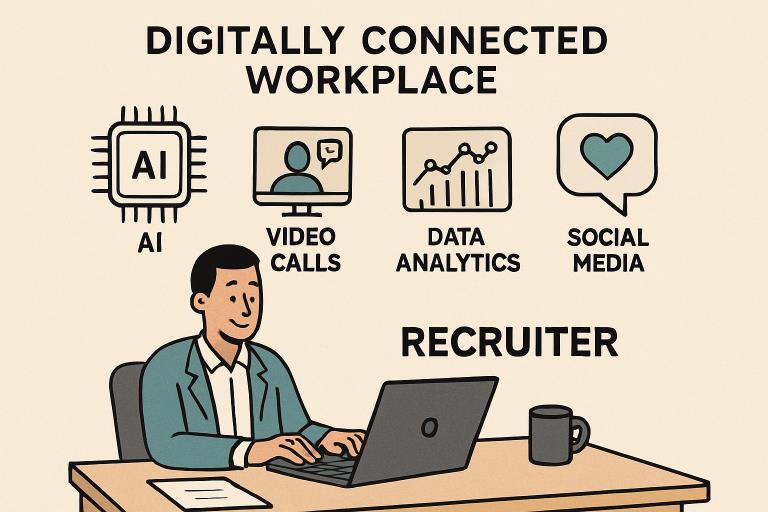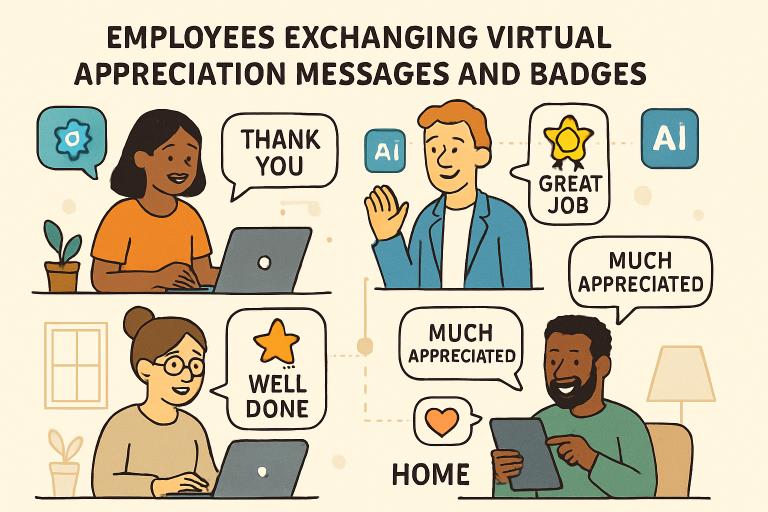Now Reading: Modern Strategies for Smart Hiring and Recruitment
-
01
Modern Strategies for Smart Hiring and Recruitment
Modern Strategies for Smart Hiring and Recruitment

Key Takeaways
- Modern recruitment leverages AI, gamification, and data analytics to enhance both efficiency and the candidate experience.
- Leveraging flexible work policies and robust digital tools attracts a broader, more diverse pool of talent.
- Organizations benefit from proactive candidate engagement and tailored outreach through social media and CRM systems.
- Successful hiring strategies prioritize both smart technology and authentic human connection at every stage.
Introduction
To thrive in today’s competitive hiring landscape, organizations must continuously modernize their recruitment approaches. The evolution of digital technology, changing workforce expectations, and the need for data-driven insights are driving significant changes in how talent is sourced and retained. Relying solely on traditional hiring methods no longer meets the demands of top candidates or ambitious companies.
A tool for recruiters now leverages artificial intelligence, gamification, and relationship management to streamline the hiring process and uncover higher-quality candidates. Companies that utilize these strategies gain an advantage in efficiently identifying the right fit and building a diverse, engaged workforce for the future.
AI Integration in Recruitment
Artificial Intelligence is rapidly transforming the hiring process. From automating repetitive tasks, such as resume screening and interview scheduling, to applying machine learning algorithms that detect subtle patterns in applicant data, AI reduces the administrative burden on hiring teams. This allows recruiters to focus on building connections with top candidates rather than being mired in paperwork. AI also helps combat unconscious bias by providing more consistent and objective evaluations, thereby promoting workplace diversity. For example, AI-powered applicant tracking systems (ATS) can efficiently sort thousands of resumes and match skills with job requirements, speeding up the hiring cycle and improving candidate quality.
Gamification in the Hiring Process
More companies are introducing game-like elements to enhance the recruitment journey. Gamification can range from skills-based assessments and problem-solving scenarios to interactive simulations and coding challenges. These engaging tasks not only make the process enjoyable for candidates but also deliver practical insights into their real-world capabilities and team fit. According to industry research from Harvard Business Review, gamified recruitment enables employers to accurately assess creativity, resilience, and adaptability—traits that are often overlooked in traditional interviews.
Leveraging Social Media Platforms
Social media channels have redefined outreach and employer branding. LinkedIn remains the premier destination for sourcing professional talent, allowing recruiters to connect with both active and passive candidates directly. Visual platforms like Instagram and TikTok provide a vibrant space to showcase an organization’s culture, work environment, and team achievements. These channels help attract a broader and more diverse pool of talent, with authentic content resonating especially with younger generations who value transparency and authenticity. A strong employer presence online also establishes credibility and trust, essential factors in today’s talent-driven market.
Data-Driven Recruitment
Harnessing data analytics enables companies to make smarter, faster hiring decisions that align with business goals. By monitoring metrics such as time-to-hire, source of hire, and candidate engagement rates, recruiters can pinpoint inefficiencies and improve outcomes. Data analysis reveals the effectiveness of job postings, identifies top channels for attracting candidates, and provides predictive insights into upcoming talent needs. Companies maximizing data-driven strategies are positioned to forecast labor trends, adapt quickly, and avoid costly mis-hires. For further reading, visit SHRM’s overview on data-driven recruitment.
Flexible Work Arrangements
The demand for flexible schedules, hybrid work, and remote opportunities has soared since the global shift toward digital workspaces. Organizations that promote autonomy and work-life balance stand out to top candidates, who are prioritizing benefits beyond salary alone. Offering flexibility demonstrates trust, attracts professionals from wider geographic regions, and boosts employee satisfaction and retention. This responsiveness to candidate needs not only improves recruitment success but also builds a resilient, future-ready workforce.
Video Interviewing
Video interviews are now a mainstay of recruitment, offering unmatched convenience and reach. This format allows candidates to showcase their personality and communication skills early in the process, all while streamlining scheduling and reducing travel costs for both parties. Video platforms also support panel interviews, automated pre-screening, and the integration of digital assessment tools, making hiring faster and more accessible. Adapting to video interviewing ensures that organizations remain agile and connected, regardless of where candidates are located.
Programmatic Advertising
Programmatic advertising utilizes sophisticated algorithms to distribute job postings across targeted digital channels. By analyzing candidate behavior and adjusting campaigns in real time, companies ensure their job ads reach the right audiences at the optimal moments for engagement. This data-driven approach enhances the relevance of job ads, increases application rates, and improves employer branding. Recruiters benefit from detailed analytics, enabling ongoing optimization and more precise allocation of recruitment resources.
Candidate Relationship Management
The best hiring strategies put people at the center. Candidate Relationship Management (CRM) systems enable proactive engagement with potential hires, including tracking touchpoints, personalizing messages, and maintaining vibrant talent pools for future openings. CRM platforms foster long-term relationships, helping recruiters stay ahead of organizational needs and ensuring candidates have a positive experience at every stage—from initial contact to onboarding. By nurturing candidate relationships, companies build a sustainable pipeline of qualified and motivated talent.
Embracing these modern hiring strategies transforms recruitment into a strategic advantage. Forward-thinking organizations leverage the latest digital tools, prioritize candidate experience, and use data to drive continual improvement. This blend of technology and human insight ensures access to top talent and supports business growth in an increasingly complex and dynamic world.
Conclusion
Adopting modern strategies for smart hiring and recruitment empowers businesses to attract top talent while streamlining the hiring process. By leveraging data-driven tools, enhancing employer branding, and prioritizing candidate experience, organizations can build stronger teams and reduce turnover. As the job market continues to evolve, companies that embrace innovative recruitment practices will gain a competitive edge and foster long-term growth.





















